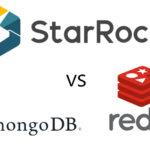Greenplum Database: A Scalable, High-Performance Data Warehouse for Modern Analytics
Introduction
In the ever-evolving world of data management, organizations are constantly seeking solutions that can handle the growing volume and complexity of their data. Traditional relational databases like MySQL often struggle to keep pace with these demands, while NoSQL databases like MongoDB may lack the necessary structure and consistency for enterprise applications. Greenplum Database emerges as a powerful alternative, offering a compelling blend of scalability, performance, and enterprise-grade features, making it an ideal choice for modern data warehousing and analytics needs.
Greenplum Database: A Powerhouse of Features
Greenplum Database stands out from the crowd with its impressive array of features, designed to address the challenges of modern data management:
- Massively Parallel Processing (MPP) Architecture: Greenplum’s distributed architecture harnesses the power of multiple nodes to process data in parallel, enabling it to handle massive datasets with exceptional speed and efficiency.
- Unparalleled Scalability: Greenplum’s horizontal scalability allows it to seamlessly scale up or down based on demand, accommodating growing data volumes and fluctuating workloads without compromising performance.
- High Availability and Disaster Recovery: Greenplum ensures continuous data availability through replication and failover mechanisms, safeguarding critical business information from downtime and ensuring uninterrupted operations.
- Cost-Effective Cloud Deployment: Greenplum’s cloud-native design makes it an ideal choice for cloud environments, offering reduced infrastructure costs and simplified deployment and management.
- Seamless Integration with BI and Analytics Tools: Greenplum integrates seamlessly with popular BI and analytics tools, enabling users to easily extract valuable insights from their data.
Greenplum Database vs. MySQL and MongoDB: A Comparative Analysis
| Feature | Greenplum Database | MySQL | MongoDB |
|---|---|---|---|
| Scalability | Horizontal | Vertical | Horizontal |
| Performance | High | Moderate | High |
| Data Warehousing | Optimized | Limited | Not designed for data warehousing |
| Structured Data | Supports | Supports | No strict schema |
| Enterprise Features | Robust | Limited | Basic |
Installing Greenplum Database on Ubuntu
To experience the power of Greenplum Database firsthand, follow these steps to install it on your Ubuntu system:
Prerequisites:
- Ensure you have Docker installed on your system.
Installation Steps:
- Download Greenplum: Download the latest Greenplum release from the official Greenplum website.
- Extract and Initialize Greenplum: Extract the downloaded archive and navigate to the extracted directory. Run the
greenplum initcommand to initialize the Greenplum cluster. - Start Greenplum Master: Run the
greenplum start -mcommand to start the Greenplum master node. - Start Greenplum Segments: Run the
greenplum start -scommand to start the Greenplum segments (data nodes). - Create a Database: Use the
createdbcommand to create a new database. For example, to create a database namedmy_database, run:
createdb my_database- Connect to Greenplum: Use the
psqlcommand to connect to the Greenplum database. Specify the database name and host information when connecting.
Conclusion
Greenplum Database stands as a testament to the power of innovation in data management. Its ability to handle massive datasets, scale effortlessly, and provide enterprise-grade features makes it an invaluable tool for organizations seeking to harness the power of their data. As the demand for data-driven insights continues to grow, Greenplum Database is poised to play a pivotal role in shaping the future of data warehousing and analytics.






Leave a Reply